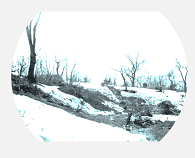 In the blank space of US Army-provided V-mail forms what to write was aways a problem. Using V-mail meant that for each recipient he was only allotted one blank square on one sheet of paper.
In the blank space of US Army-provided V-mail forms what to write was aways a problem. Using V-mail meant that for each recipient he was only allotted one blank square on one sheet of paper.
The words that Lt Pete Lafitte wrote to his parents and to Merry Joliat would be microfilmed; reels of microfilm were sent home on cargo planes. At home, V-mail would be printed and mailed to the addresses that he gave. Circumventing the problem of thousands of bags of paper mail loaded on ships that might be sunk on the perilous voyage across the enemy submarine-infested Atlantic ocean, V-mail was light and reliable. But that did not answer the question of what to tell his parents and Merry Joliat.
On his mind were the bodies of dead or wounded soldiers on the trail up Mt Belvedere, where orders were not to stop for the wounded. Inside picturesque haystacks on deserted farmland, Nazi snipers lurked. Friends were slain in unmarked mine fields. He wanted to tell his parents that when his unit entered a village it was impossible to know whether houses or barns were inhabited by friend or foe. In the rigid V-mail blank space, he told his Mom and Dad how an Italian farm family had greeted his unit with homemade bread and cheese.
On his mind were ruined villages in the Italian countryside. On a V-mail form, he told his parents how a mule attached to the kitchen had run away. There was fear that the banging pots and pans the mule carried would alert the enemy of his unit's presence. But the sleeping Panzers had not heard.
